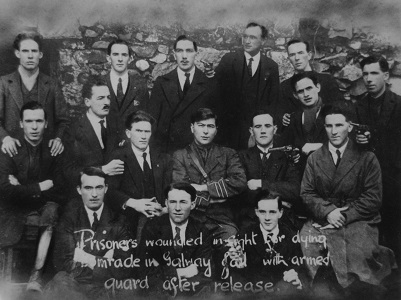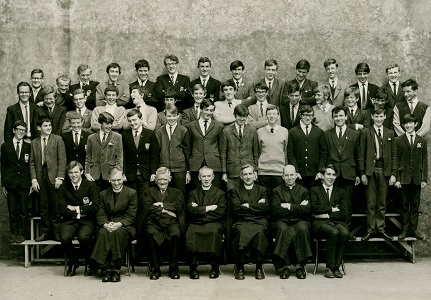by Tom Kenny
For much of the 19th century, the Persse family ran one of the most successful distilleries in Ireland. Their product became world famous. They were major contributors to the industrial life of Galway and provided much needed employment. In addition to their staff, they were also supplied by a number of artisans working in the Nuns Island area — coopers, cork manufacturers, printers, carters, case makers, etc.
Read more ...
by Tom Kenny
Diarmuid Crowley, a native of Co Cork, was arrested, charged with being a judge in the Sinn Féin courts, and incarcerated in Galway Jail even though he was ill. His condition worsened and he demanded the attendance of a private medical doctor. The prison doctor refused, so 40 Sinn Féin prisoners decided to do something to prevent Mr Crowley suffering any further.
The jail building was horseshoe in shape. On November 24, 1921, they piled up bedding and clothing and other articles in an apartment of the ground floor of the southern wing and set them ablaze. They broke into the paint shop, scattered oils and paints, and set them on fire. They seized six prison warders and marched them to the northern wing using no violence against them. They were kept on the corridor on the second floor. The prisoners broke into the punishment cell on this wing and eight bales of fibre there were set ablaze.
Read more ...
by Tom Kenny
The Connacht Mineral Water Company was incorporated 80 years ago tomorrow, on July 6th, 1938. The first board meeting was held on July 18th and the following were appointed as directors John Keane, chairman; John E. Cotter, vice-chairman; Paul O’Dea, secretary and managing director. They manufactured mineral waters, were beer and ale wholesalers, and in the early days sold groceries as well. Their head office was at the top of High St., where overhead a Mrs. Madden had a dressmaking business. Behind the office was an area where staff member Michael Joe Walsh bottled whiskey and rum, and behind that again was a space which extended to Middle St. where they bottled the mineral waters. They used the water from a well in Oranmore which was ideal for blending the whiskey. On the other side of Middle St. they occupied a building known as Corbett’s Yard where Darby Kelleher stored and repaired cases etc. and where they stored the ciders, Babychams and Carlsberg.
Read more ...
by Tom Kenny
When President Michael D Higgins, officially opened the new Our Lady’s Boys’ Club clubhouse in 2015, he said: “Like so many successful community initiatives, OLBC was founded and built on vision, a spirit of participation and a will to make a genuine and positive difference to the community. When Fr Leonard Shiel SJ established a club in 1940, I doubt that he realised just how enduring his vision would be. Today, OLBC is the longest running youth club in the country and has woven its way into the fabric of community life in Galway, welcoming members from many neighbourhoods including Shantalla, Westside, Ballinfoyle, Rahoon, Corrib Park, and Newcastle.
Read more ...








